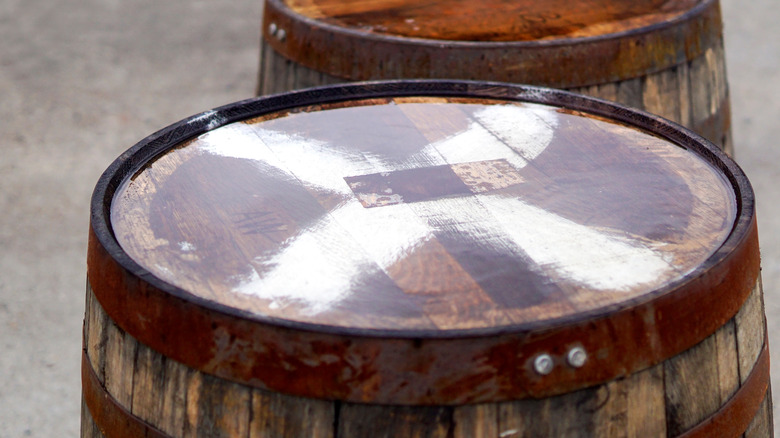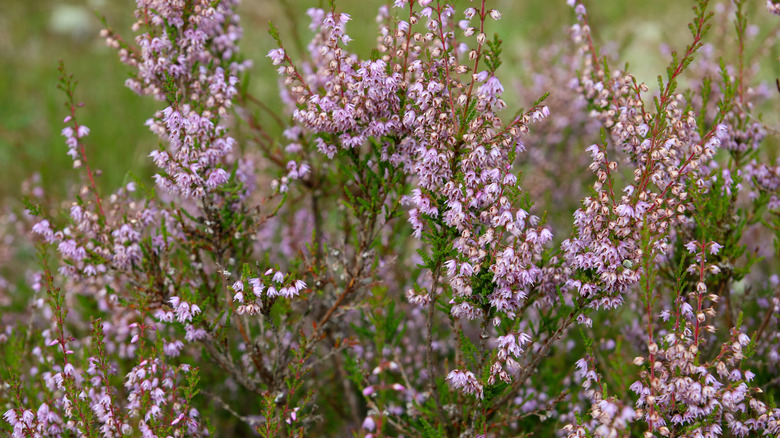Why We'll Never Know The Original Recipe For Heather Ale
Heather ale dates back over 300 years, cites European Waterways. Yet, as Zythophile has pointed out, there's debate about where the ale was first brewed and by which group of people. Pottery from 2,000 B.C. was found with trace elements of the libation (honey, grain, meadowsweet, and royal fern), mentions of a similar ale appeared in the 16th century, and monastic manuscripts dating 1840 were found with a parallel recipe — but many of these batches were made in secret (via Game of Brews). Homebrewers have tried to recreate original recipes using dried heather and honey, but most attempts have been largely experimental (per Lemons & Time).
In the 1980s, Bruce Williams set about collecting heather, malted barley, and bog myrtle after a customer handed him a hand-written Gaelic recipe; with enough practice, Williams produced a beverage he felt comfortable serving to the masses (per The Independent). Advertised as "The Original Craft Beer," Williams' light amber ale has a "floral-peaty aroma, full malt character, and a spicy herbal finish." And for history enthusiasts, the bottle comes with an added incentive: "This beer allows you to literally pour 4000 years of Scottish history into a glass."
A narrowly-preserved brew
Even Robert Louis Stevenson wrote a poem about the beverage, an unfortunate tale ending in the death of the last two remaining men — a father and son — who knew how to properly make the ale. According to Folklore Scotland, a similar story is shared in Irish circles, with Vikings holding the secret to a drink that was closer to mead than beer.
"From the bonny bells of heather / They brewed a drink long-syne / Was sweeter far than honey / Was stronger far than wine," Stevenson describes in his poem. Purple heather flowers are key to nailing the distinct taste, reports Mel Magazine, and if we set aside the story of tribal defeat and a father outsmarting his captors (he told the king to kill his son before jumping off a cliff), the ale has quite the staying power. So while Stevenson's poem ends on a dismal note — "Summer came in the country / Red was the heather bell / But the manner of the brewing/ Was none alive to tell" — thanks to Williams, the ale of folklore has been preserved.

